Thinking about hot desking? Find out how it can boost flexibility and efficiency in your office, plus get insider tips to make it work for your team.
By Making Moves London
December 5, 2024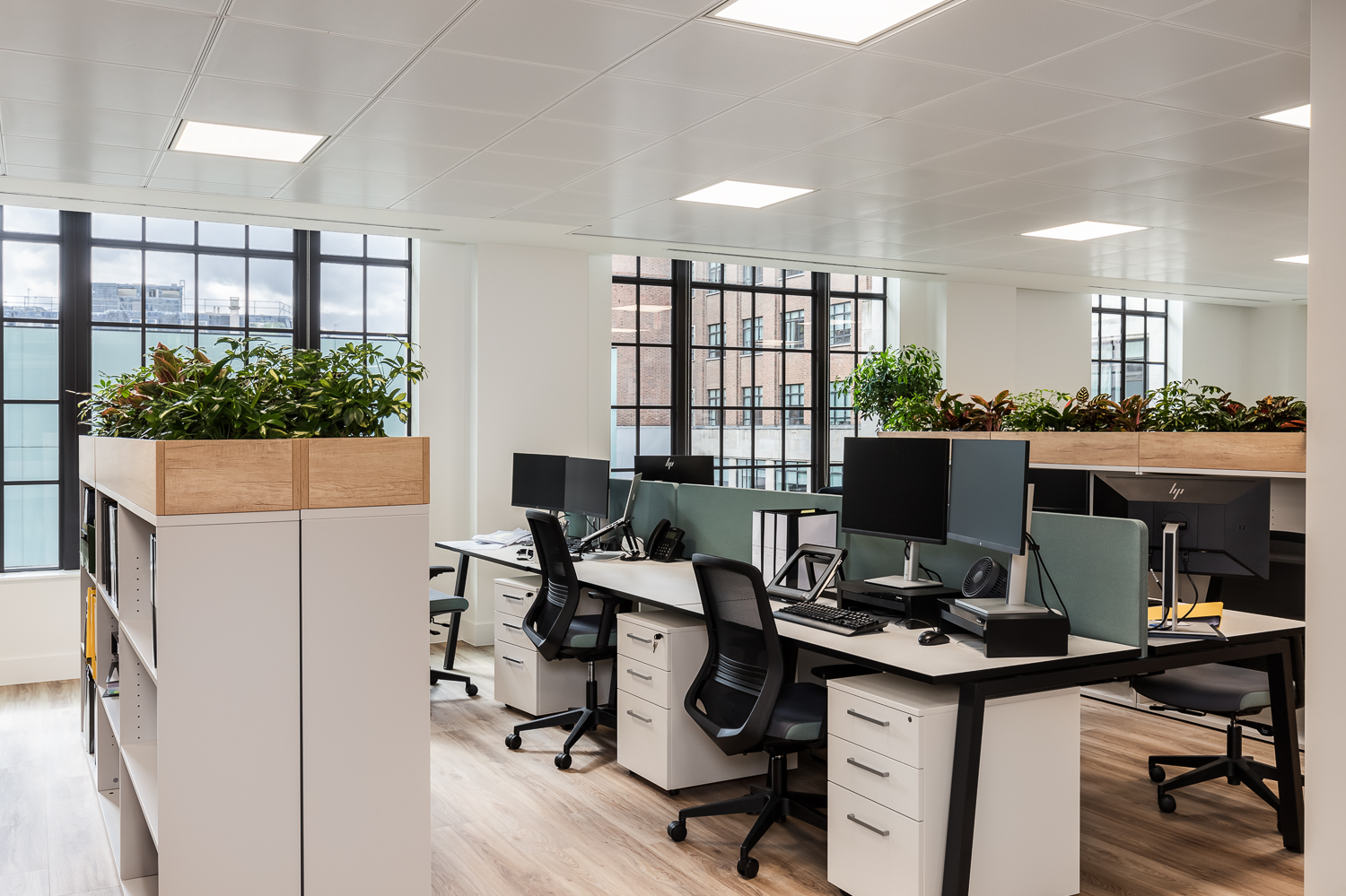
As businesses embrace flexible working arrangements, hot desking has become an increasingly popular choice for companies aiming to make the most of their office spaces. This guide will walk you through what hot desking is, its benefits and challenges, and offer expert tips on implementing it effectively.
Making Moves is here to help you navigate office transitions, from finding your ideal space to managing the fit-out process for a smooth setup.
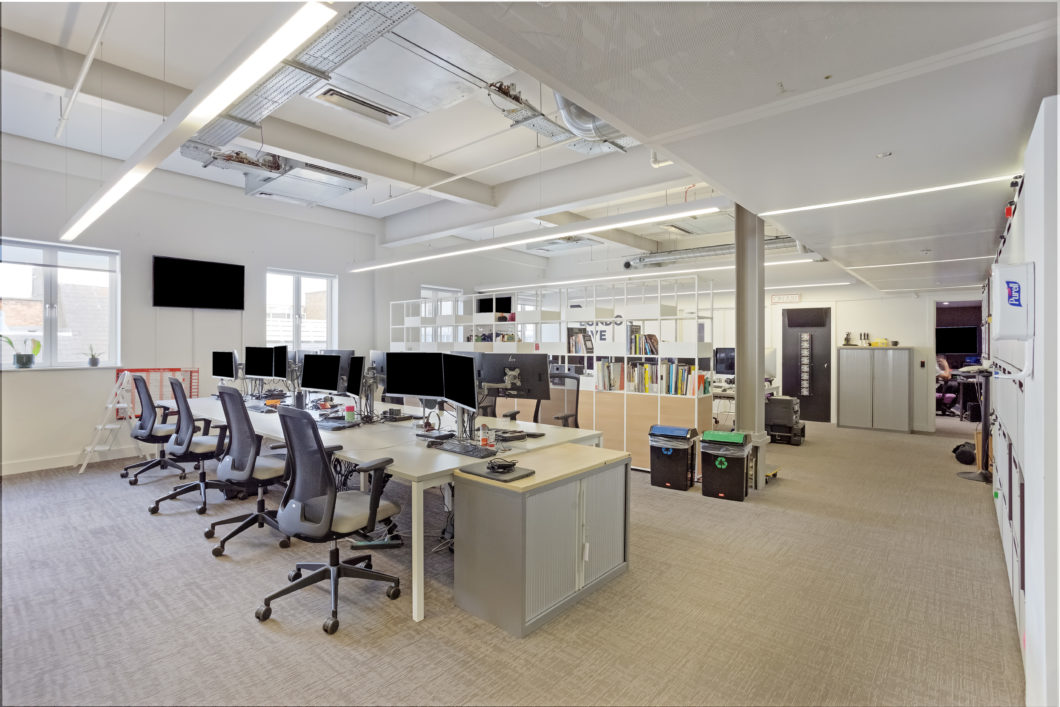
Hot desking is a workspace strategy where employees don’t have assigned desks, but instead choose from available spots each day. As remote and hybrid work have gained traction, so has hot desking. This approach can help companies maximise space and reduce costs, offering flexibility for teams that aren’t always in the office.
Did you know the term ‘hot desking’ is thought to originate from the practice of hot racking in the Navy? Sailors on different shifts would share the same bunk to save space. Just as sailors ‘hot-racked’ their bunks, employees in a hot-desking setup share desks, moving in and out of available spots as needed.
Hot desking can bring a range of benefits to the workplace, especially for teams that value flexibility and efficient use of space. Here are some key advantages to consider:
Hot desking allows companies to make the most of limited office space by reducing the need for assigned desks. For businesses with a smaller footprint, this setup can enable them to accommodate a larger number of employees without the need for additional square footage.
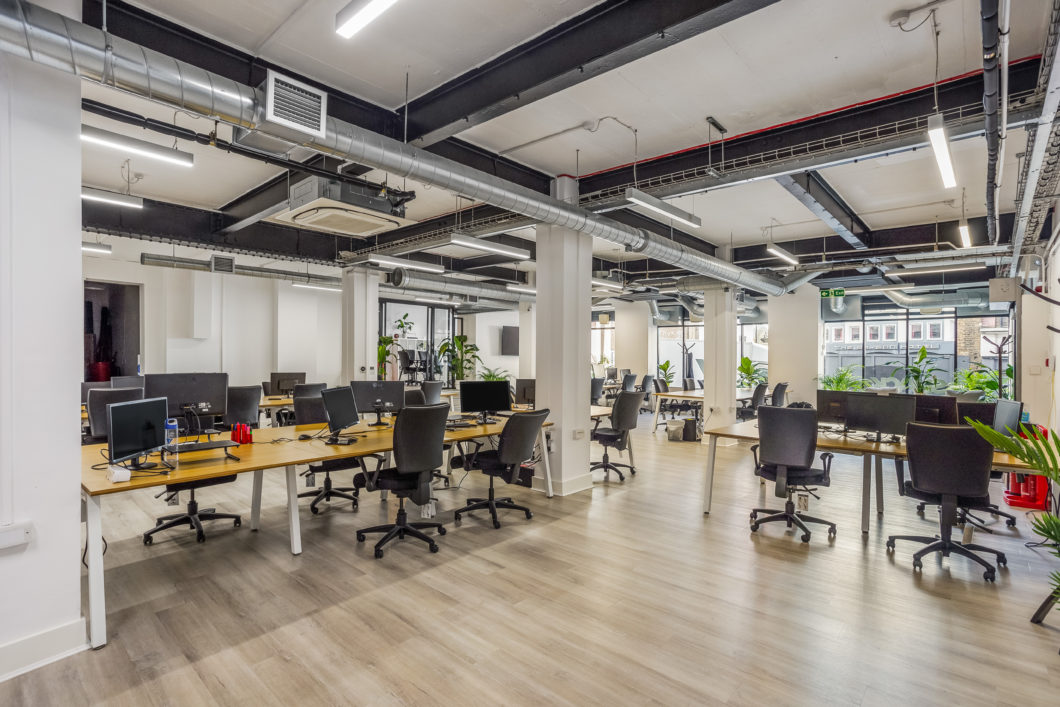
Learn how to maximise your office layout in our blog, ‘How to Make the Most of Your Current Office Space’.
Removing fixed seating arrangements can lead to new interactions across different teams, promoting a more collaborative and dynamic work environment. Employees who might not usually cross paths can connect and share ideas, fostering creativity and innovation. For more tips on fostering teamwork, explore our guide on creating a collaborative workspace.
Hot desking provides adaptability, allowing teams to grow, shrink, or reorganise as needed without requiring a complete office reconfiguration. This flexibility is particularly valuable for businesses with fluctuating headcounts or project-based teams.

By changing up their environment daily, employees may experience a refreshing sense of variety that keeps them more engaged and focused. New seating arrangements can lead to different perspectives and allow employees to interact with a broader group of colleagues.
With fewer fixed workspaces, hot desking can reduce overall energy usage and office supplies, contributing to a more eco-friendly workspace. Companies looking to minimise their carbon footprint may find that a flexible seating plan aligns well with their sustainability objectives.
For more eco-friendly ideas, check out our blog, ‘16 Green Office Ideas to Make Your Workspace More Sustainable’.
For businesses with expanding teams, hot desking can be a scalable solution that accommodates growth without requiring a larger office immediately. This flexibility can save on costs in the short term while allowing for future planning as the team evolves.
While hot desking has its advantages, it also comes with challenges that may impact daily workflow and employee satisfaction. Here are some potential drawbacks to keep in mind:

One of the biggest drawbacks of hot desking is the potential for desk shortages during peak times. Employees may struggle to find a workspace, leading to frustration and wasted time, especially in larger teams or busy offices. This can, of course, be managed with the right tools in place; keep reading to find out how!
Hot desking can lead to increased distractions as people come and go throughout the day. The lack of a fixed team around you might result in more background noise, which can be disruptive, especially for those who need a quiet space to focus.
Without assigned desks, employees lose the ability to create a personalised workspace. This lack of familiarity and comfort can impact morale and productivity, particularly for those who thrive in a consistent environment.
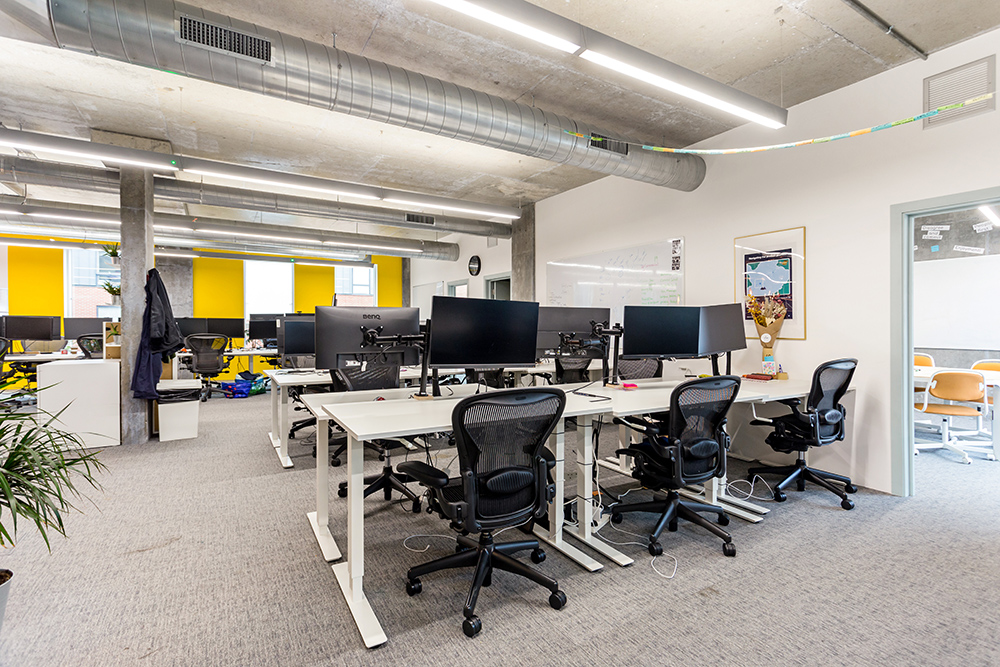
Without dedicated desks, employees may find it challenging to maintain an ergonomic setup. Constantly adjusting chairs, monitors, and other equipment can lead to discomfort or even long-term health issues.
For some, especially those who require specific adjustments for accessibility, this challenge can be even greater. For more on creating an inclusive and accessible workspace, check out our blog on how to design for accessibility.
To manage desk assignments effectively, many companies turn to booking software or tracking systems, which come with additional costs. These tools are often necessary to maintain order, but they can increase overall operational expenses.
A successful hot desking setup requires clear guidelines, but without well-defined policies, employees may be unsure about desk etiquette or storage solutions. This confusion can create tension and reduce the system’s effectiveness.
Hot desking has gained popularity for its flexibility and potential cost savings, but does it deliver on these promises? Research presents a mixed picture.
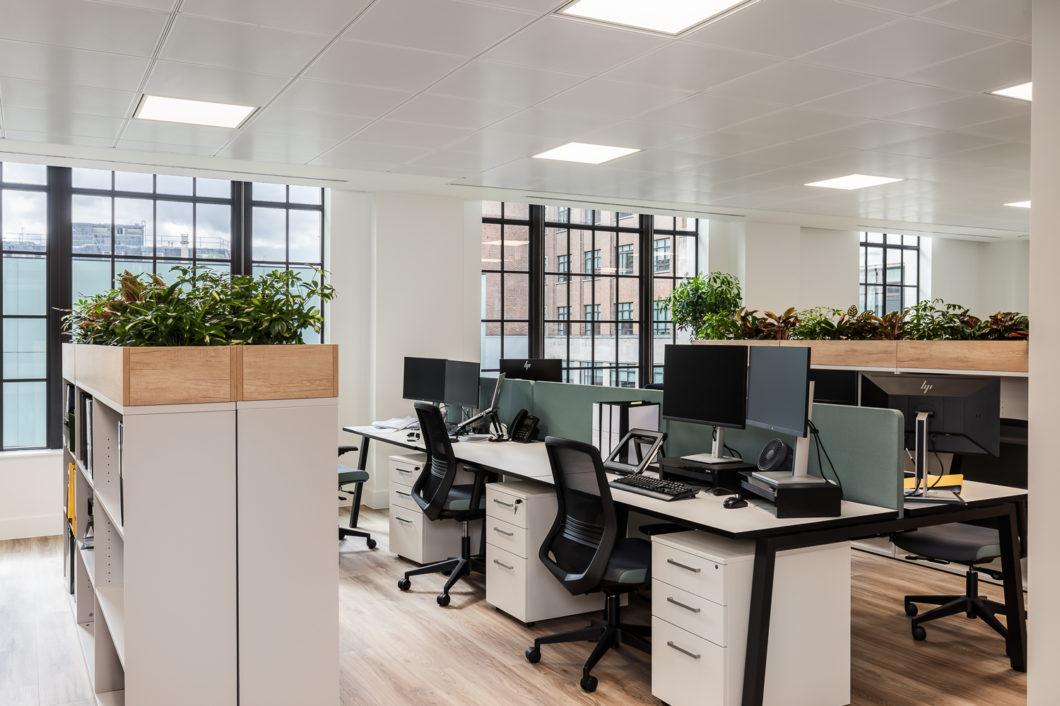
A study published in The Conversation found that shared-desk environments can lead to distrust, distractions, and strained relationships, negatively impacting productivity and morale. Similarly, Unispace’s Returning for Good study revealed that 83% of employees currently hot desking would prefer an assigned desk, highlighting the challenges some face in adjusting to this model.
However, other research highlights the potential benefits of hot desking. The University of Bristol suggests that intelligent hot-desking models, which use tools like occupancy sensing, can boost productivity by optimising desk use and catering to individual preferences. A 2014 study on teamwork and collaborative workspaces found that highly collaborative environments improve morale and engagement, while Nanayakkara et al. (2021) noted that dynamic office changes, including hot desking, foster adaptability and efficiency.
These findings suggest that hot desking can work well when implemented thoughtfully, with clear policies, supportive technology, and adaptable solutions tailored to employees’ needs.
Deciding whether hot desking is a good fit for your business involves weighing several key factors. First, consider your industry’s specific needs. Companies in finance or law, where confidentiality and privacy are critical, may find hot desking less suitable without private spaces to complement it. On the other hand, creative or tech industries, where collaboration and idea-sharing thrive, often benefit from the flexibility hot desking offers.
Next, think about your team dynamics. Are your employees comfortable with change and adaptability? If your team prefers a consistent setup or needs specialised equipment, such as dual monitors or ergonomic chairs, implementing hot desking might require additional investment in adaptable furniture or shared lockers.
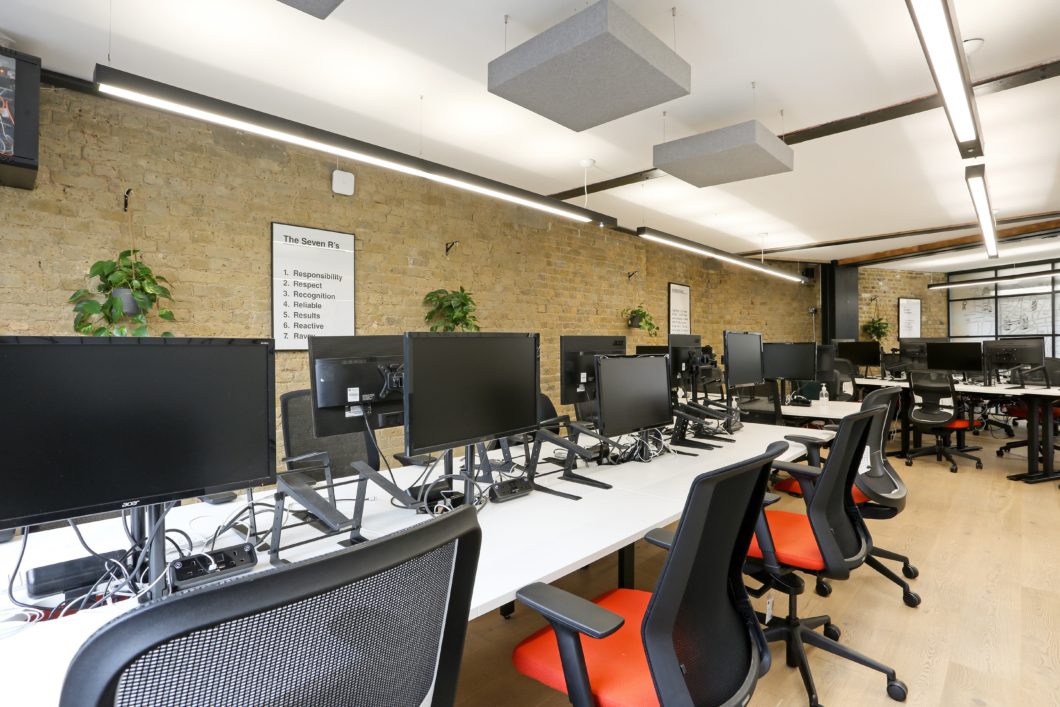
Your current office layout also plays a crucial role. Open-plan offices with diverse zones for quiet work, collaboration, and relaxation are better suited for hot desking than traditional layouts with fewer shared spaces.
Lastly, consider how hot desking aligns with your company culture. Will employees feel supported and productive in a more fluid workspace? Providing clear policies and gathering employee feedback can help smooth the transition.
If you’ve decided hot desking is right for your business, the next step is figuring out how to implement it effectively.
Hot desking can transform your workspace, but to make it a success, careful planning and the right systems are essential. Here are some tried-and-tested ways of implementing hot desking in the workplace:
This informal approach works well for smaller teams where desk availability is rarely an issue. Employees can choose any open spot when they arrive, promoting flexibility and spontaneity. However, it’s best suited for offices with ample desk space.
For larger teams or busier offices, a reservation system ensures employees can book a desk in advance, reducing uncertainty and frustration. This approach, often called ‘hotelling’, provides structure while maintaining flexibility, helping everyone plan their workday with confidence.
Design your office with zones tailored to specific tasks—quiet areas for focused work, collaboration spaces for teamwork, and breakout areas for informal discussions. This setup allows employees to choose the environment that best suits their needs throughout the day.
Office neighbourhoods group employees by team or department within a shared space, providing a balance between flexibility and a sense of community. This setup helps teams collaborate more effectively while maintaining a shared identity, even in a hot-desking environment. It’s an ideal middle ground for businesses wanting to promote teamwork without assigning permanent desks.
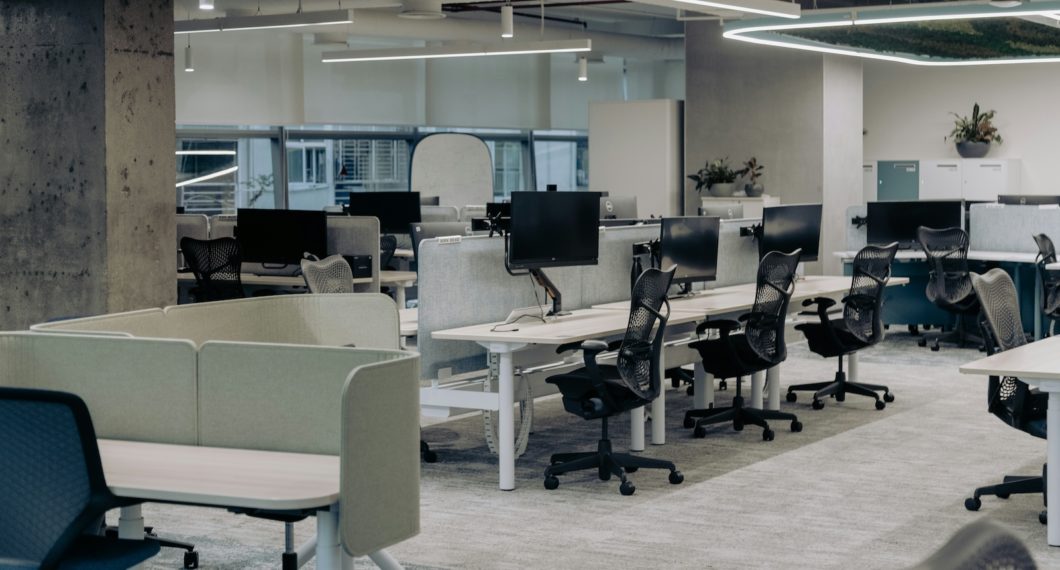
Hot desking is often championed for its potential to cut office costs. By maximising desk usage, businesses can reduce their office footprint, saving on rent and utilities. This approach is particularly beneficial for companies adopting hybrid work models, where desks might otherwise sit unused.
That said, there are upfront costs to consider, such as desk booking software and storage solutions. However, these investments are typically outweighed by long-term savings and greater flexibility. Here at Making Moves, we can help your business navigate this transition, ensuring your hot desking setup supports your team’s needs while achieving your business goals.
So, if you’ve made it this far, you’re probably ready to dive into hot desking. Before you get started, here are our expert tips to ensure your setup runs smoothly and keeps your team happy:
Set clear rules for desk usage, cleanliness, and etiquette to avoid confusion and foster a respectful shared environment.
Prevent desk conflicts and streamline management with user-friendly reservation tools.
Offer secure storage for personal items to keep shared spaces organised and give employees peace of mind.
Design your office with different zones for quiet work, collaboration, and relaxation, catering to diverse work styles.
Ensure employees who need focus have dedicated, distraction-free areas within the workspace.
Equip your office with adjustable chairs and desks to support employee comfort and well-being.
Promote interaction across departments by encouraging employees to sit in different areas, enhancing collaboration.
Combine hot desking with assigned seating for roles requiring consistent setups or added privacy.
Maintain a clean and inviting environment by implementing regular shared space cleaning protocols.
Foster a culture that embraces change, helping employees adapt to a more dynamic work environment.
When Bionic sought Making Moves’ help to manage the relocation of their Luton headquarters, flexibility was a top priority. Their 23,000 sq ft space needed to accommodate a growing team, expanding from 200 to 350 employees. To achieve this, we developed a phased occupancy strategy that minimised downtime while implementing a hot desking model designed to foster collaboration and adaptability.

Our approach included creating flexible seating arrangements and collaborative zones that aligned perfectly with Bionic’s dynamic work culture. The open-plan layout featured team-specific areas and informal meeting spaces, complemented by a multifunctional kitchen for company-wide gatherings. This setup not only maximised space efficiency but also supported Bionic’s goal of fostering cross-team interaction and reducing its overall footprint.
With a carefully planned strategy and close collaboration, the fit-out was completed on time and within budget, demonstrating how a well-executed hot desking model can deliver both operational and financial benefits.
For more examples of how we’ve helped businesses transform their workspaces, visit our case study archive.
Hot desking is just one of the ways to transform your office for greater efficiency and flexibility. At Making Moves, we offer a full suite of services, including relocation consultancy, bespoke office searches, and fit-out project management, to help you make the most of your workspace.
Ready to transform your office? Get in touch today and let’s create a workspace that works for your business.

? Source, negotiate and manage entire office moves.
? Dispose, sublet or redesign your office.
?️ Professional, independent support.